10 Healthy Indian Diabetes Breakfast Recipes
- Anirban Biswas

- Nov 29, 2023
- 4 min read

A diabetes-friendly breakfast is crucial for maintaining stable blood sugar levels throughout the day. In India, where diverse culinary traditions abound, creating nutritious breakfast options that align with the principles of diabetes management is both delicious and feasible. Here are four healthy breakfast options from different regions of India, each carefully designed to provide balanced nutrition while being mindful of the unique flavors that characterize North, West, East, and South Indian cuisines.
North Indian Menu:
1. Vegetable Poha:
Poha Calories: Approx. 250 kcal per serving
Nutrition:
Carbohydrates: 45g
Protein: 7g
Fat: 5g
Poha Recipe:
Wash and flatten rice flakes (poha).
Sauté mustard seeds, curry leaves, onions, peas, and other veggies in a pan.
Add turmeric, salt, and poha. Cook until vegetables are tender.
2. Moong Dal Chilla:
Moong Dal Chilla Calories: Approx. 200 kcal per serving
Nutrition:
Carbohydrates: 30g
Protein: 12g
Fat: 5g
Moong Dal Chilla Recipe:
Blend soaked moong dal, spinach, and spices to make a batter.
Pour a ladle of batter on a hot pan, spread, and cook until both sides are golden.
West Indian Menu:
3. Sprouts Salad:
Sprouts Salad Calories: Approx. 150 kcal per serving
Nutrition:
Carbohydrates: 20g
Protein: 10g
Fat: 3g
Sprouts Salad Recipe:
Mix sprouted moong, chopped tomatoes, cucumber, onions, and coriander.
Add chaat masala, lemon juice, and salt.
4. Whole Wheat Methi Thepla:
Methi Thepla Calories: Approx. 180 kcal per serving
Nutrition:
Carbohydrates: 25g
Protein: 6g
Fat: 7g
Methi Thepla Recipe:
Knead whole wheat flour with fenugreek leaves, spices, and water.
Roll out flatbreads (thepla) and cook on a griddle.
East Indian Menu:
5. Oats Upma:
Oats Upma Calories: Approx. 220 kcal per serving
Nutrition:
Carbohydrates: 35g
Protein: 8g
Fat: 5g
Oats Upma Recipe:
Roast oats in a pan. In another pan, sauté mustard seeds, onions, and veggies.
Add water, salt, and let it cook until oats are soft.
6. Masoor Dal Pancakes:
Masoor Dal Pancakes Calories: Approx. 160 kcal per serving
Nutrition:
Carbohydrates: 25g
Protein: 10g
Fat: 3g
Masoor Dal Pancakes Recipe:
Blend soaked masoor dal, ginger, green chilies, and spices.
Pour a ladle of batter on a hot pan, spread, and cook.
South Indian Menu:
7. Idli with Sambar:
Idli Calories: Approx. 150 kcal per serving
Nutrition:
Carbohydrates: 30g
Protein: 5g
Fat: 1g
Idli Recipe:
Ferment a mixture of rice and urad dal to make idli batter.
Steam in idli molds and serve with sambar.
8. Dosa with Coconut Chutney:
Dosa Calories: Approx. 200 kcal per serving
Nutrition:
Carbohydrates: 30g
Protein: 7g
Fat: 6g
Dosa Recipe:
Ferment rice and urad dal batter. Spread on a hot griddle to make dosas.
Serve with coconut chutney.
BONUS READ: Healthy Continental Breakfast Menu:
1. Greek Yogurt Parfait:
Yogurt Parfait Calories: Approx. 250 kcal per serving
Nutrition:
Carbohydrates: 30g
Protein: 15g
Fat: 8g
Yogurt Parfait Recipe:
Layer Greek yogurt with fresh berries, a sprinkle of chia seeds, and a drizzle of honey.
Repeat the layers and top with a few almonds or walnuts.
2. Vegetable Omelette with Whole Grain Toast:
Omelette with Whole Grain Toast Calories: Approx. 300 kcal per serving
Nutrition:
Carbohydrates: 25g
Protein: 20g
Fat: 12g
Omelette with Whole Grain Toast Recipe:
Whisk together eggs, salt, and pepper. Pour into a hot, oiled pan.
Add diced bell peppers, tomatoes, onions, and spinach. Fold when the eggs are set.
Serve with whole grain toast.
Adjust the portion sizes and ingredients based on individual needs and preferences. Always consult with a healthcare professional or a nutritionist for personalized advice.
ALSO READ : 8 Unhealthy Breakfast options For Indian Diabetes Patients
In the rich tapestry of Indian cuisine, breakfast offerings span from wholesome and diabetes-friendly to indulgent and potentially unhealthy. While the former includes nourishing options rooted in regional flavors, the latter often involves deep-fried delights and calorie-laden treats. Here, we glance at two less-than-ideal breakfast choices from each region, where traditional favorites take on a more decadent form. From the tempting Aloo Paratha in the north to the crispy Medu Vada down south, these options, though beloved for their taste, may be higher in calories and less suitable for those managing diabetes or aiming for a balanced diet. As we explore the diverse culinary landscape of India, it's essential to be mindful of choices and strike a balance between culinary delight and nutritional prudence.
North Indian:
Aloo Paratha with Butter:
Aloo Paratha Calories: Approx. 350 kcal per serving
2. Samosa Chaat:
Samosa Calories: Approx. 400 kcal per serving
West Indian:
Vada Pav:
Vada Pav Calories: Approx. 300 kcal per serving
2. Kachori with Aloo Sabzi:
Kachori Calories: Approx. 450 kcal per serving
East Indian:
Mishti Doi (Sweetened Yogurt):
Mishti Doi Calories: Approx. 200 kcal per serving
2. Luchi with Alu Dum (poori-bhaji) :
Luchi Calories: Approx. 300 kcal per serving
South Indian:
Masala Dosa with Coconut Chutney:
Masala Dosa Calories: Approx. 400 kcal per serving
2. Medu Vada with Sambar:
Medu Vada Calories: Approx. 350 kcal per serving
It's important to note that these options are considered less healthy due to factors such as high refined flour content, deep-frying, and added sugars or fats. For individuals with diabetes or those aiming for a balanced diet, it's advisable to opt for healthier alternatives and practice moderation.
Frequently Asked Questions :
How many calories are in a serving of idli? - Idli typically has around 40-50 calories per piece.
How many calories are in sambar idli and dosa? - Sambar idli can vary but is roughly 150-200 calories, while plain ( sada) dosa is around 100-150 calories per piece.
What are the calories in a masala dosa? - Masala dosa is approximately 300-350 calories, including the potato filling.
How many calories are in poha, and what is its nutritional content? - Poha has around 250 calories per serving, with carbohydrates, protein, and fats contributing to its nutritional value.
What is the calorie count of an omelette ? - An omelette has about 90-100 calories per egg.
How many calories are in a paratha and aloo paratha? - A plain paratha is approximately 120-150 calories, while aloo paratha is around 250-300 calories.
What is the calorie content of a samosa ? - A samosa has about 250 calories.
How many calories are in upma and rava upma? - Upma has around 200-250 calories, and rava upma is in a similar calorie range.
What is the calorie count of a vada and a medu vada? - A vada is approximately 100-150 calories, and a medu vada falls in the same calorie range.
How many calories are in dahi vada and dhokla? - Dahi vada is around 100-150 calories, while dhokla is about 150-200 calories per serving.
What is the calorie content of yogurt and Greek yogurt? - Regular yogurt has around 150 calories per cup, while Greek yogurt may have slightly more at 200-250 calories.
How many calories are in besan chilla and moong dal chilla? - Besan chilla is around 120-150 calories, and moong dal chilla is in a similar calorie range.
What is the calorie count of oats chilla? - Oats chilla typically has around 150-200 calories, depending on the ingredients used.

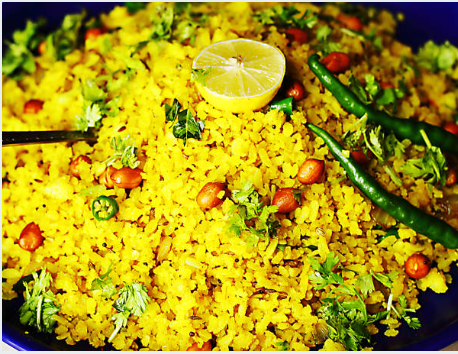

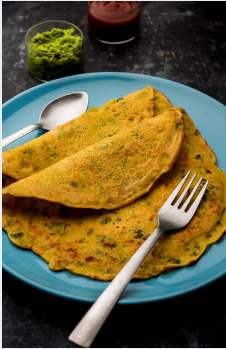

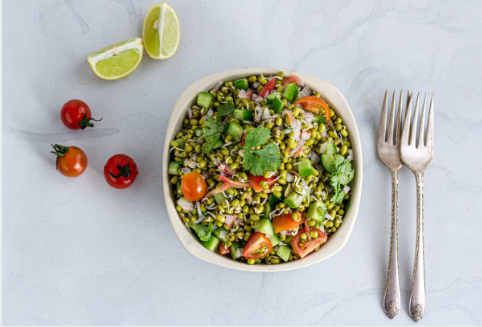

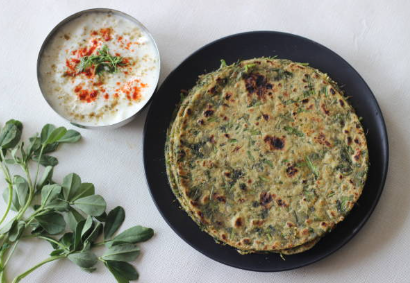

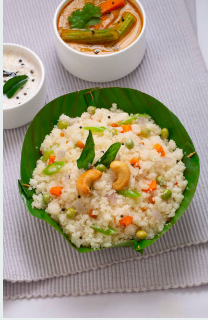

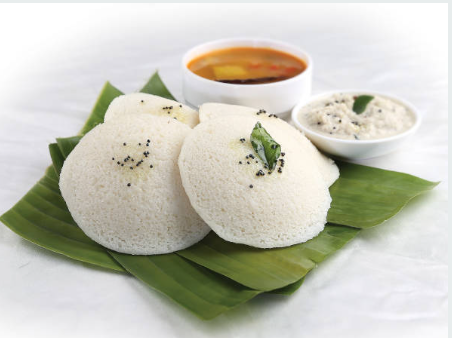

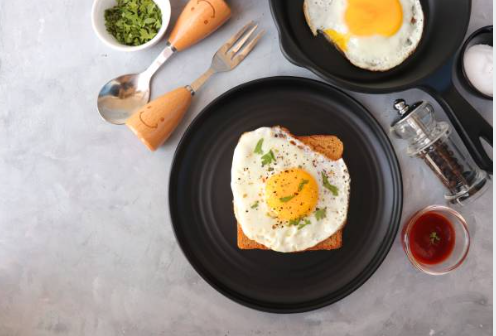



Comments